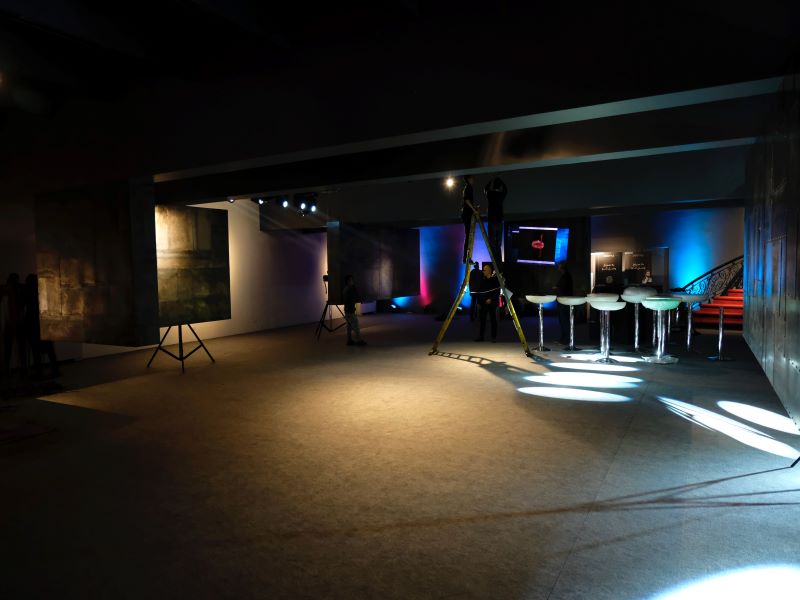
Believe it or not, most businesses need some form of AV product to conduct their basic routines. Think about it, when was the last time you hosted a conference, held a presentation, or staged a group conference call with your colleagues without the help of AV technology?
Whether you like it or not, AV technology makes the world go round. The COVID-19 pandemic only exacerbated our need for further investment into AV technology, as this technology facilitated much of our company habits, like collaborative working while in isolation.
From conference calling to virtual events, it’s likely that your company has relied on AV technology more than once, so it’s important that you’re aware of the best products to invest in, so you can start improving your communication and engagement.
To help, we’ve created this guide to the best AV products we think you need, alongside a general guide to why you should consider them and what they mean. So, we’ve got you covered whether you’re a total technology novice or know a video wall inside out.
What are AV products?
Before we get started, it’s important to first discuss the meaning of AV products. An audio-visual product refers to anything that incorporates audio and visual elements. That means anything that generates visuals, like tablets, televisions, and monitors, and anything generating sounds like speakers, microphones, or audio recording devices, can be considered AV products.
In truth, it’s hard to narrow down what we mean by these products, as audio-visual devices can refer to a huge range of technology. AV products can refer to everything from your television to microphones, video walls, and even an HDMI extender.

Anything that facilitates audio or visual content can be considered an AV product. For businesses, your AV products may look a little different depending on the setting. For some businesses, AV products refer to interactive whiteboards, video walls, multi-monitor controllers, and much more.
For others, AV products refer to their microphones, speakers, and splitters, especially if they don’t usually dabble in large presentations, conferences, or virtual collaboration.
Why should you consider using AV products?
So, why should you consider using AV products in your business? Well, this is another one that’s hard to pin down. Ultimately, your reasoning behind using AV products will depend on your business model, methods of communication, and individual business objectives. However, there are a few set benefits that you can experience if you use AV products.

Here’s a guide:
1. Better engagement
We can all agree that standard PowerPoint presentations can sometimes be a little tedious and leave us drifting off in meetings. While AV products don’t have the power to change the content, they do have the opportunity to present information in a much more exciting way.
Using AV technology to elevate your presentations is a great way to breathe life back into your business and improve engagement, especially during business meetings.
The better engagement has a positive impact on productivity, and how in tune your employees are with your objectives, so you’re bound to reap some serious benefits with AV products.
2. Improved communication flow
AV products tend to facilitate better communication of information. Take a video wall, for example. With a video wall, you can place a wall inside your office and use this as a hub for your major announcements, task distribution, and other important messaging that all employees benefit from accessing.
Not only does this stop vital messages from getting lost in flooded email inboxes, but this also stops serious productivity bottlenecks by reducing miscommunication. Centralizing your flow of information in this way ensures that everyone receives the exact same message at the same time in the same format!
3. Versatility and catering to a wider audience
One of the most important things that AV technology facilitates is the ability to cater to a much wider audience. With the help of AV technology, you can unite virtual attendees to your meetings with your in-person attendants.
This facilitates much more productive collaborative working conditions and can have a positive impact on company culture. One other significant benefit is that AV products are versatile.
That means you can use them for your conference on Monday and then your trade show on Tuesday. With this, you’ll get the most out of your investment and ensure you can broaden your operations to more opportunities.
What AV products should you consider for your business?
Here’s a guide to the AV products that we think you should consider investing in for your business

1. Video wall
One of the first AV products that you should consider investing in is a video wall. Video walls are large surfaces that are made of multiple monitors acting together as coherent surfaces. With video walls, accessed via an led video wall rental perhaps, you can display a large concentration of content from a single source.
This is because these monitors and video wall technology allow you to isolate screens, meaning you can show different sources at the same time.
This is extremely beneficial if you need to communicate large quantities of information to an audience or you wish to provide visual aids to the rest of your presentation or video wall content. Video walls are extremely beneficial for companies that are looking to revitalize their conferences, trade shows, or offices.
2. Video wall controller
If you’re interested in investing in a video wall, one of the most important technologies that you’ll need to consider is a video wall controller. A video wall controller is a 19” rack-compatible computer chassis that processes different input and output signals.
With a controller, users can manage their presentation layout, use the interface to remotely operate their video wall, and display live overlay windows.
3. Video wall processor
Video wall processors are the brains behind a video wall project, as they’re responsible for transforming video signals into viewable content on your video wall.
Usually, processors control signals from HDMI, satellite, or media player sources, ensuring content is displayed on monitors regardless of their boundaries. Processors tend to handle resolution, remote collaboration, and layout management, so this is a must-have technology for your project.
4. Matrix switcher
If you’re thinking that you need an all-in-one solution to your video wall business woes, then you should consider investing in a video wall matrix switcher. Matrix switchers manage all services for all video wall project sizes, meaning this user-friendly technology is a must-have.
Matrix switchers are capable of seamlessly switching between different input signals, allowing you to distribute high volumes of information with ease. Additionally, matrix switchers ensure that you can include important effects like scaling, fading, frame rate conversion, and cropping in moments.
One of the reasons that you should consider using a matrix switcher is that this technology comes with unlimited bandwidth. That means you’ll have uninterrupted service during those important presentations where buffering just isn’t an option.
Additional:





